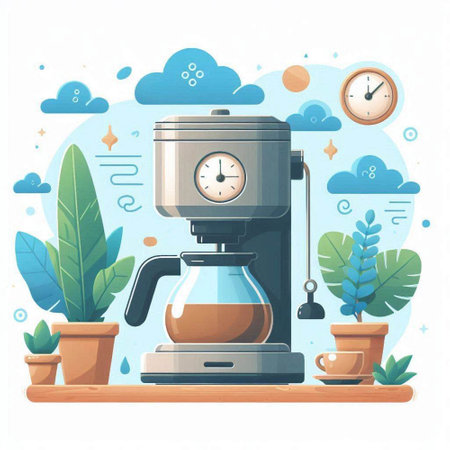The Science Behind Table Turnover: Why It Matters
When it comes to dining out in the United States, how long you stay at your table is more than just a matter of personal comfort—its a crucial factor in the dynamics of restaurant operations. From a scientific and business perspective, table turnover refers to the rate at which tables are cleared and reset for new guests. This metric directly impacts a restaurant’s ability to serve more customers, optimize revenue, and maintain smooth kitchen flow. At its core, table turnover is a balancing act between providing warm hospitality and ensuring operational efficiency.
Restaurant owners and managers carefully monitor average dining times because every extra minute a guest lingers after finishing their meal affects potential sales. For example, during peak hours, a high table occupancy rate can cause bottlenecks, resulting in longer wait times for incoming guests and increased pressure on staff. On the other hand, rushing diners can harm the customer experience, leading to negative reviews and decreased loyalty. Research shows that guest satisfaction peaks when they feel neither hurried nor neglected; finding this sweet spot is both an art and a science.
Ultimately, understanding table time etiquette isn’t just about manners—it’s about recognizing how your actions fit into the bigger picture of a restaurant’s success. By appreciating the science behind table turnover, diners can make informed choices that benefit themselves and the broader dining community.
2. American Dining Culture: Unwritten Rules and Expectations
In the United States, dining out is about more than just food—it’s a social experience with its own set of unwritten rules. While there is no official timer ticking away at your table, American diners are generally mindful of how long they linger, especially in busy restaurants. Understanding these norms can help you avoid awkward situations and ensure a positive experience for everyone involved.
Typical Mealtime Lengths in the U.S.
| Meal Type | Standard Duration (Minutes) |
|---|---|
| Breakfast/Brunch | 30-60 |
| Lunch | 45-75 |
| Dinner (Casual Dining) | 60-90 |
| Dinner (Fine Dining) | 90-120+ |
The table above outlines the general expectations for how long diners typically occupy a table in various settings. These timeframes reflect not only the type of meal but also the pace at which Americans tend to eat and socialize during different times of day.
Reading Social Cues: When Is It Time to Leave?
American servers are often trained to subtly signal when it’s time to wrap up your meal. You might notice the check being presented without you asking for it—a polite indication that your table may soon be needed. Other cues include clearing plates promptly, refilling water less frequently, or asking if you need anything else multiple times. In group settings, when conversation dwindles and guests start checking their phones or gathering belongings, it’s usually a sign that the meal is coming to an end.
Cultural Context Matters
It’s important to note that while Americans value efficiency, lingering over coffee or dessert is not frowned upon unless the restaurant is crowded or closing soon. Being aware of your surroundings—such as a waiting line at the door or reservations stacking up—can help you gauge whether it’s time to vacate your table. Respecting these unspoken rules ensures smoother dining experiences for both guests and staff alike.

3. Health, Comfort, and Courtesy: Factors That Influence Table Time
When it comes to determining how long is “too long” at the table, a blend of physical comfort, meal pacing, and social courtesy all play crucial roles.
Physical Comfort: The Body’s Natural Timer
Americans typically value a dining environment that supports both enjoyment and well-being. Sitting for extended periods—especially in rigid restaurant chairs—can lead to discomfort or even minor health concerns, like back stiffness or poor circulation. For most people, about 60 to 90 minutes is the sweet spot for remaining comfortable while eating and conversing. Prolonged table time beyond this can detract from the pleasure of the meal and may even encourage unhealthy habits like mindless snacking.
Meal Pacing: Balancing Enjoyment with Efficiency
Meal pacing is another key factor. In the U.S., meals are often structured around courses, with social interaction woven throughout. A typical dinner out might last anywhere from an hour to two hours, depending on the occasion. Rushing through a meal can feel impolite or unsatisfying, while lingering excessively may be seen as inconsiderate—especially in busy establishments where tables are in high demand. Striking a balance between savoring each course and being mindful of other diners’ needs reflects both self-awareness and respect for the dining space.
Courtesy: Social Awareness at the Table
American table etiquette strongly emphasizes courteous behavior. This means being aware of both your party’s experience and the needs of restaurant staff and fellow customers. Hogging a table long after finishing your meal—sometimes called “camping”—can inconvenience others waiting for a seat or put undue pressure on servers whose income relies on turning tables efficiently. Practicing good manners by settling up promptly when finished and reading subtle cues from staff (like clearing plates) helps keep things running smoothly for everyone involved.
4. Red Flags: Signs You Might Be Overstaying
Dining out in the U.S. comes with unspoken rules, especially when it comes to how long you stay at your table. Understanding when your visit is stretching into “too long” territory can help you maintain good etiquette and avoid discomfort for yourself and restaurant staff. Here are some common red flags that signal you might be overstaying your welcome:
Subtle Hints from the Staff
| Staff Action | What It Means |
|---|---|
| Offering to box up leftovers | This usually signals that your meal has concluded and the staff is gently encouraging you to prepare to leave. |
| Clearing plates quickly | If your server is clearing away dishes before everyone at the table is finished, it could be a polite way of hinting that it’s time to wrap up. |
| Bringing the check without being asked | In American dining culture, this often means your table time is expected to end soon, especially during busy periods. |
| Checking in more frequently than usual | When servers repeatedly ask if you need anything else, it may be a subtle reminder that others are waiting for a table. |
Changes in the Dining Room Atmosphere
- Tables Filling Up: If you notice an influx of guests waiting for seats or standing by the entrance, it’s a strong indicator that your extended stay is impacting other diners.
- Loud or Prolonged Conversations: When your conversation volume rises above the general noise level—especially after finishing your meal—it can draw attention and signal to staff that your visit has shifted from dining to lingering.
- Shift Changes: If you see new servers coming on duty or cleaning crews starting their work, this often means service for your mealtime window is ending.
Recognizing the Signs Early
Being aware of these cues helps ensure a positive experience for both you and the restaurant staff. Respecting these indicators not only maintains good etiquette but also supports the smooth operation of the dining room—something highly valued in American restaurant culture.
5. Tips for Mindful Table Use in American Restaurants
In American dining culture, being considerate of your table time not only shows respect to the restaurant staff but also to fellow diners awaiting a seat. Here are some practical tips to help you manage your table time thoughtfully and respectfully, especially during peak hours or on special occasions:
Be Aware of the Restaurant’s Pace
Pay attention to the flow and atmosphere. If there’s a noticeable wait at the entrance or if staff appear rushed, it’s a sign that lingering too long could impact others’ experience. Adjust your pace accordingly, particularly during lunch rushes or dinner prime times.
Order Efficiently and Plan Ahead
If you anticipate needing extra time—perhaps for a birthday celebration or business discussion—mention this when making your reservation. Order appetizers, mains, and desserts together if possible, so the kitchen can coordinate your meal efficiently. This minimizes downtime between courses and helps keep things moving smoothly.
Read Social Cues from Staff
Servers often provide subtle signals: offering the check without being asked, clearing plates promptly, or asking if you need anything else. These cues typically mean they’re preparing for the next seating. Respond graciously by settling your bill or wrapping up conversations.
Avoid Table Camping
After finishing your meal and paying the bill, try not to linger excessively—especially if the restaurant is busy. Fifteen to twenty minutes post-payment is generally considered reasonable unless the space is clearly empty and no one is waiting.
Consider Others During Special Occasions
If celebrating an event like a graduation or anniversary, let the restaurant know in advance; many establishments will accommodate longer stays at off-peak hours. If this isn’t possible, be mindful of how your extended visit may affect other guests.
Practice Gratitude and Communication
A simple thank you and honest communication with your server goes a long way. If you do stay longer than usual, consider tipping extra as appreciation for their flexibility. By following these tips, you contribute positively to both the restaurant’s operations and the overall dining experience for everyone.
6. Navigating Exceptions: When Lingering is Appropriate
While respecting table time etiquette is important, there are certainly moments when spending a little extra time at your table is both understandable and acceptable. Special occasions, like birthdays, anniversaries, or reunions, often call for longer meals filled with laughter, conversation, and celebration. In these situations, American dining culture tends to be more forgiving—especially if you’ve reserved in advance or chosen a less busy time of day.
Another common exception is slow service. If the kitchen is backed up or your server is delayed, it’s reasonable to expect your dining experience may take longer than usual. Most restaurants understand that guests can’t control the pace of their meal in these cases. However, if you notice extended delays, politely checking in with your server or the manager can help keep things on track.
If you know ahead of time that you’ll need extra table time—perhaps you’re planning to open gifts or give a toast—it’s wise to communicate your needs early. Let your host or server know when you’re seated so they can accommodate your plans as best as possible. Many establishments appreciate the heads-up and may be able to adjust your reservation or suggest off-peak hours to ensure a more relaxed experience.
When the occasion arises and you find yourself lingering longer than expected, courtesy goes a long way. Consider ordering an additional round of drinks or dessert to justify your stay during busy periods. And if you sense your table might be needed soon, ask staff if it’s okay to remain a bit longer or offer to move to the bar area if available.
Ultimately, clear communication and consideration for both restaurant staff and fellow diners help make exceptions smooth for everyone. By being proactive and respectful, you can enjoy those special moments without breaking unwritten dining rules.

